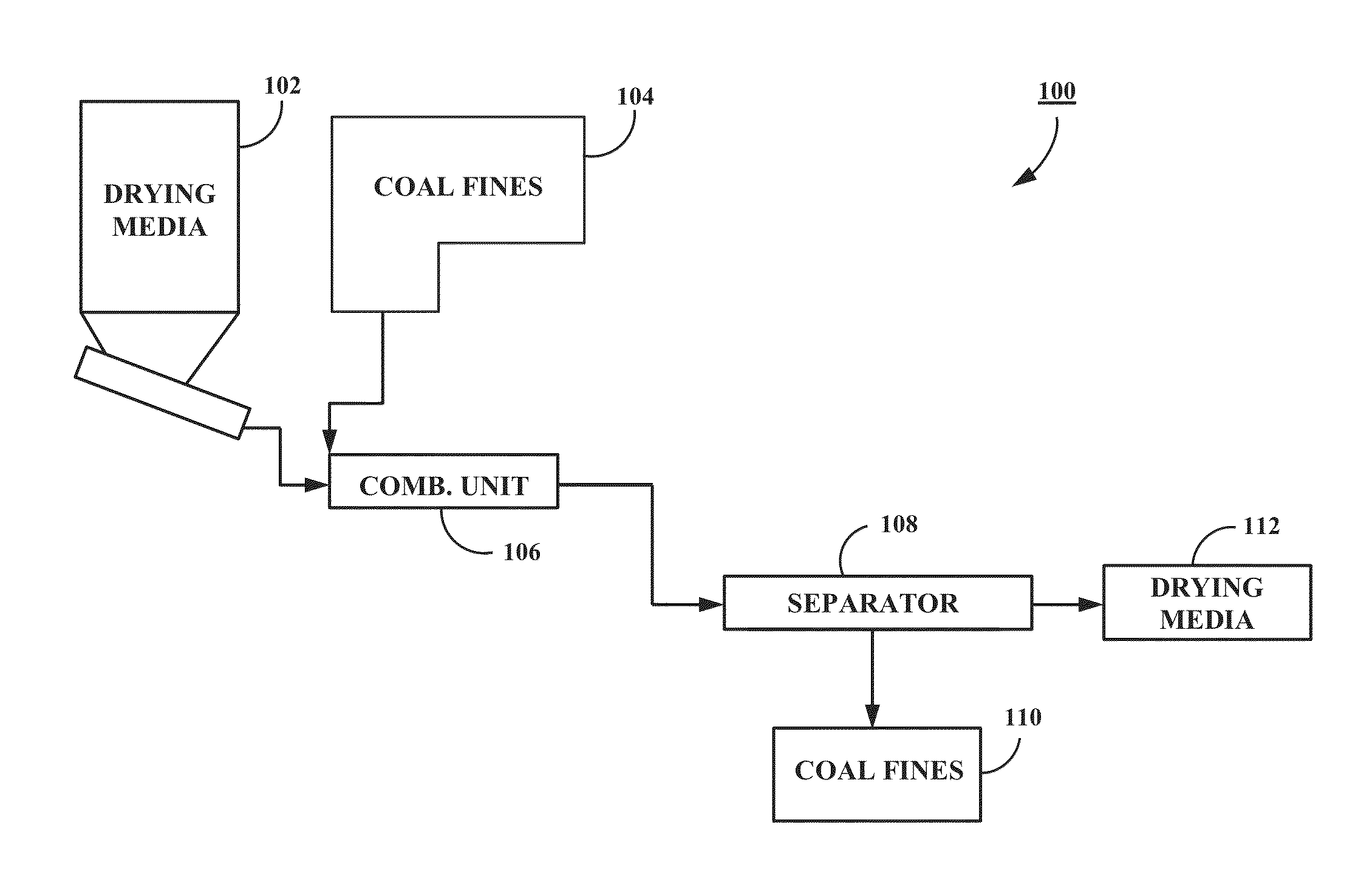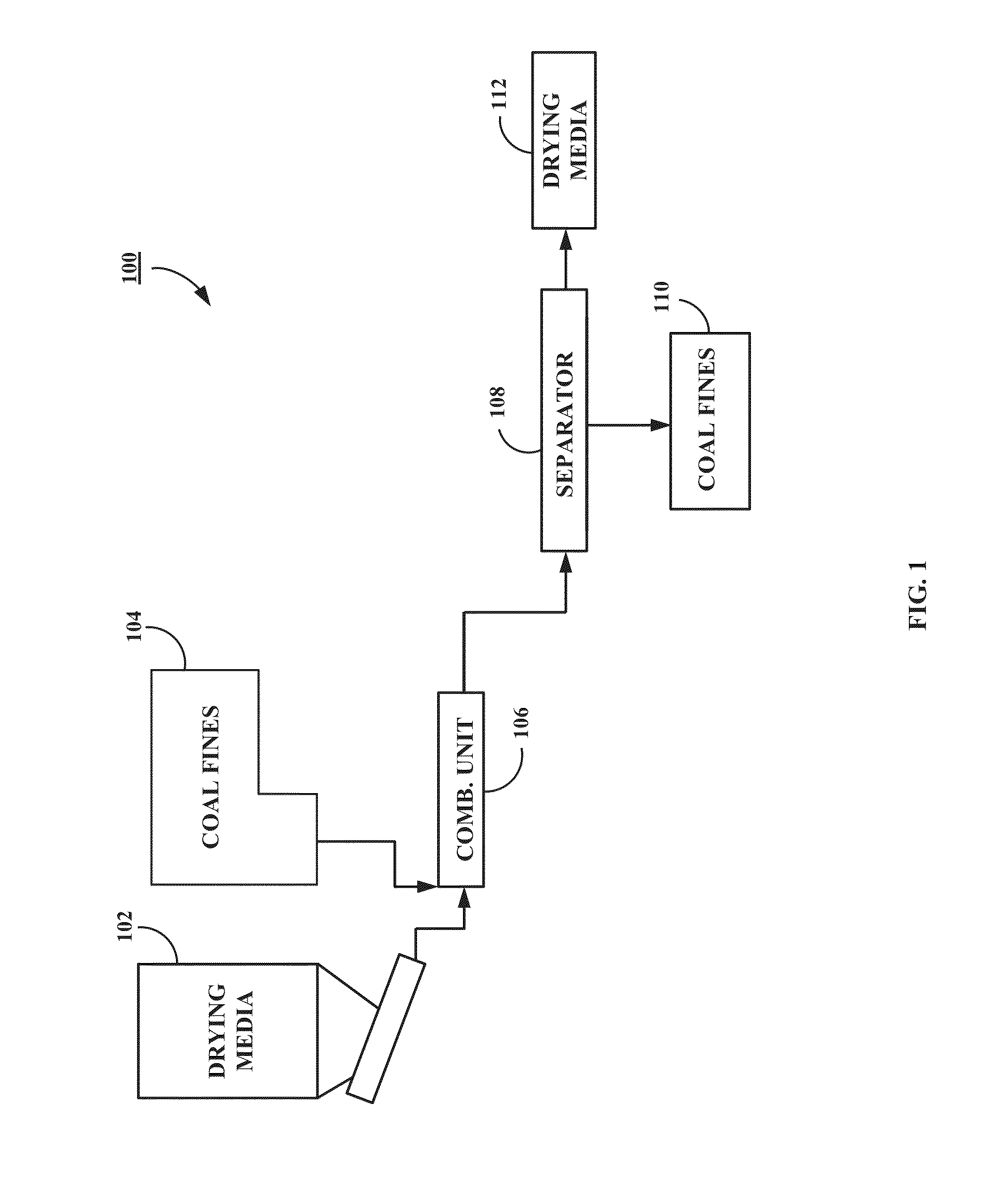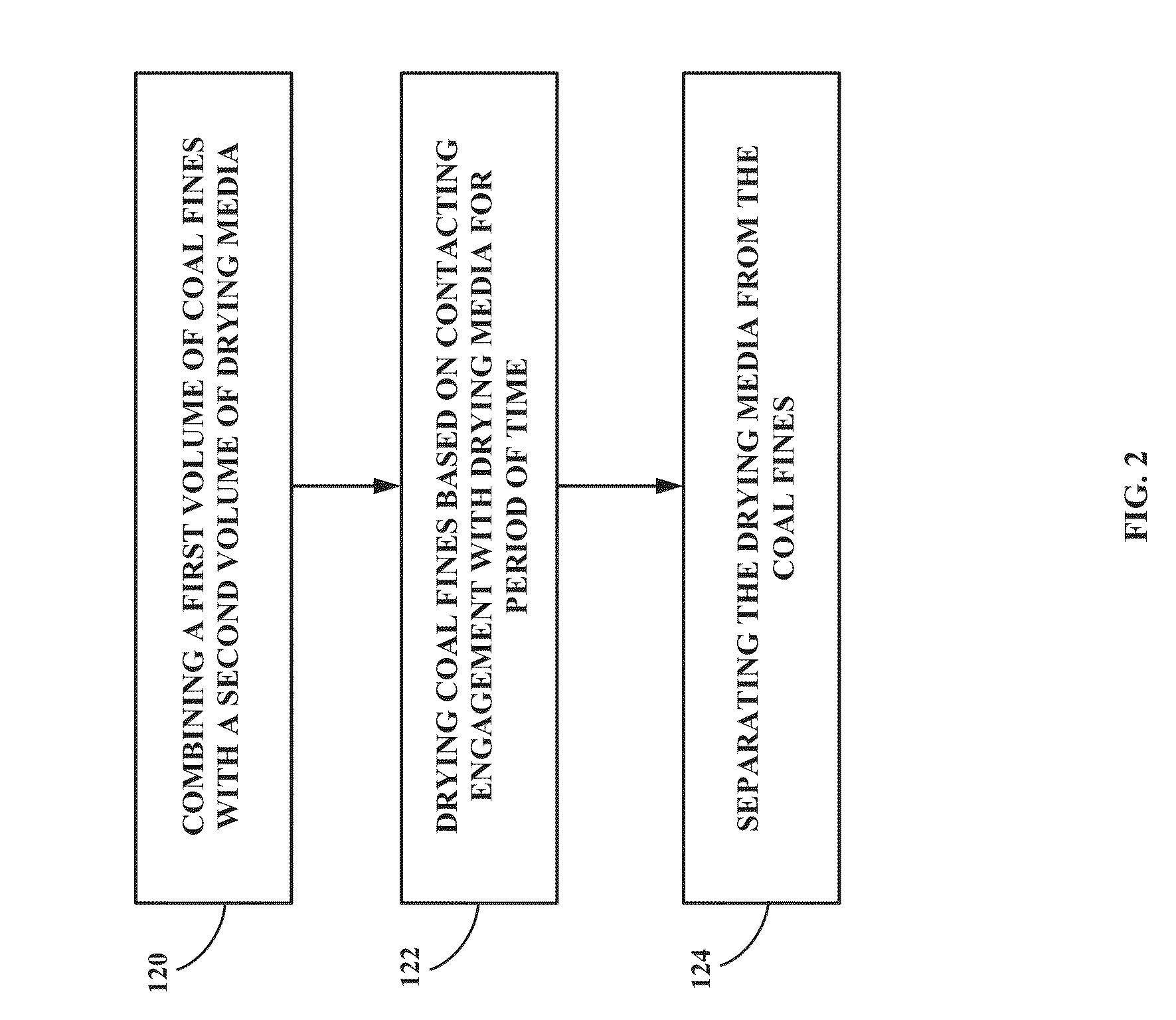Coal drying method and system
a drying method and coal technology, applied in the field of drying coal, can solve the problems of inability to reduce coal having a size below, inability to reduce coal having a moisture content, and inability to meet the needs of customers, etc., to achieve the effect of maximizing the percentage of moisture removal, maximizing surface contact, and large capacity to remove water
- Summary
- Abstract
- Description
- Claims
- Application Information
AI Technical Summary
Benefits of technology
Problems solved by technology
Method used
Image
Examples
example 1
Coal Fines Example 1
[0106]Coal fines (15 g) with a moisture content of 30% by weight were mixed with molecular sieves having a pore sizes of 3 angstroms (15 g, product MS3A4825 2.5-4.5 mm bead size from Delta Adsorbents, which is a division of Delta Enterprises, Inc., Roselle, Ill.) for about 60 minutes thereby drying the coal fines to <5% moisture by weight. After separating the coal fines from the sieves by sifting, the molecular sieves were weighed and dried in a 100° C. oven. The coal fines were weighed periodically to determine the length of time necessary to drive off the water absorbed from the coal. The data is plotted in FIG. 15 for the first batch of coal. The process is repeated using the same molecular sieves with a second through sixth batch of coal fines. The graph in FIG. 15 shows the weight measurements for the molecular sieves throughout the drying process after drying the first through sixth batches of coal fines. FIG. 15 demonstrates that the molecular sieves can ...
example 2
[0107]Coal fines (15 g) with a moisture content of 30% by weight are mixed with a polyacrylate polymer (0.5 g Online Science Mall, Birmingham, Ala.) for about 1 minute thereby drying the coal fines to <5% moisture by weight. After separating the coal fines from the polymer gently sifting the mix, the molecular polyacrylate polymer particles are recovered for reuse after drying.
example 3
[0108]Coal fines (100 g) with a moisture content of 21% by weight are mixed with activated alumina beads (6 mm diameter, AGM Container Controls, Inc, Tucson, Ariz.) for about 10 minutes, thereby drying the coal fines to about 7% moisture by weight. After separating the coal fines from the polymer gently sifting the mix, the activated alumina beads are recovered for reuse after drying.
PUM
| Property | Measurement | Unit |
|---|---|---|
| Fraction | aaaaa | aaaaa |
| Fraction | aaaaa | aaaaa |
| Fraction | aaaaa | aaaaa |
Abstract
Description
Claims
Application Information
 Login to View More
Login to View More - R&D
- Intellectual Property
- Life Sciences
- Materials
- Tech Scout
- Unparalleled Data Quality
- Higher Quality Content
- 60% Fewer Hallucinations
Browse by: Latest US Patents, China's latest patents, Technical Efficacy Thesaurus, Application Domain, Technology Topic, Popular Technical Reports.
© 2025 PatSnap. All rights reserved.Legal|Privacy policy|Modern Slavery Act Transparency Statement|Sitemap|About US| Contact US: help@patsnap.com



